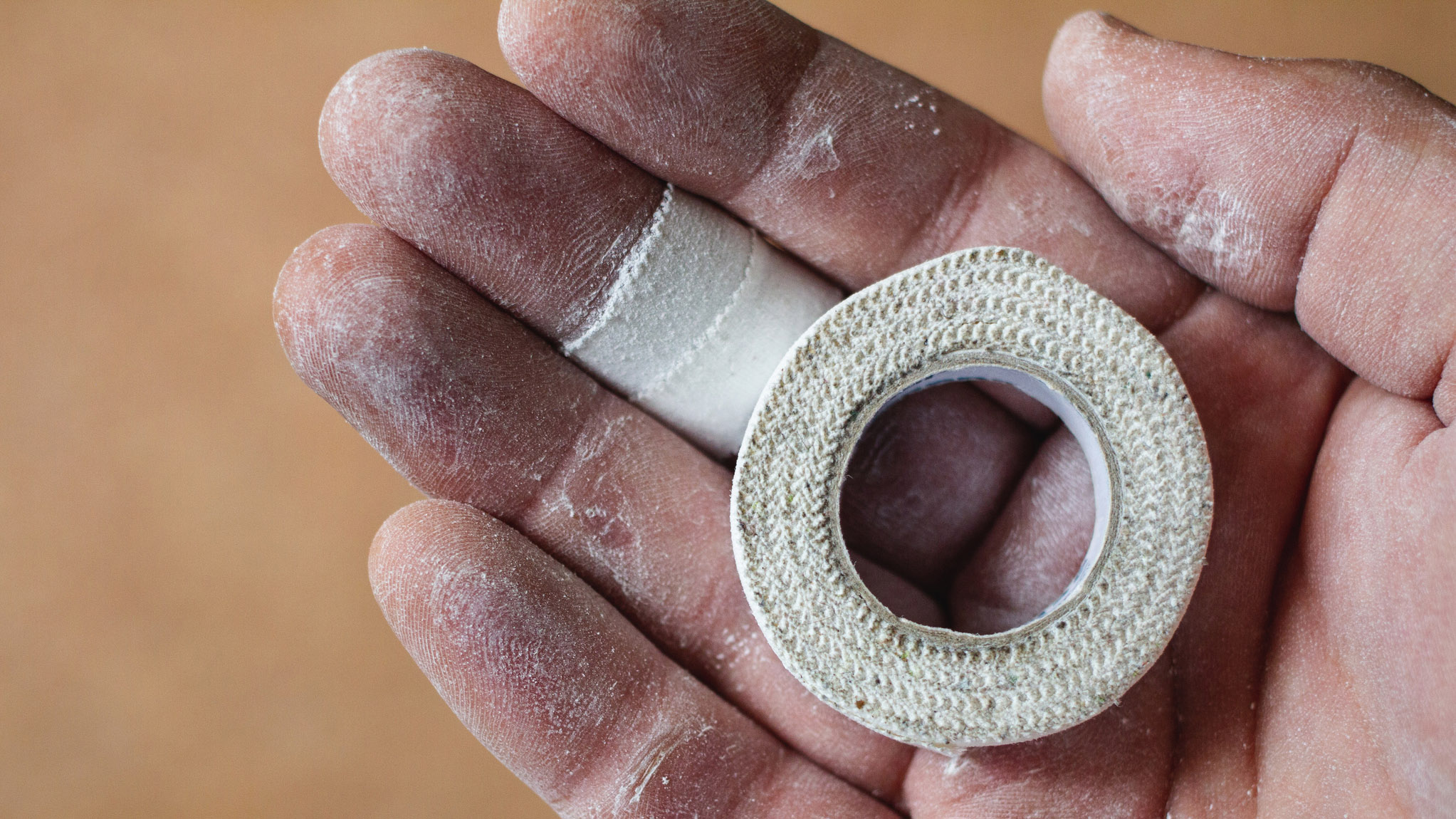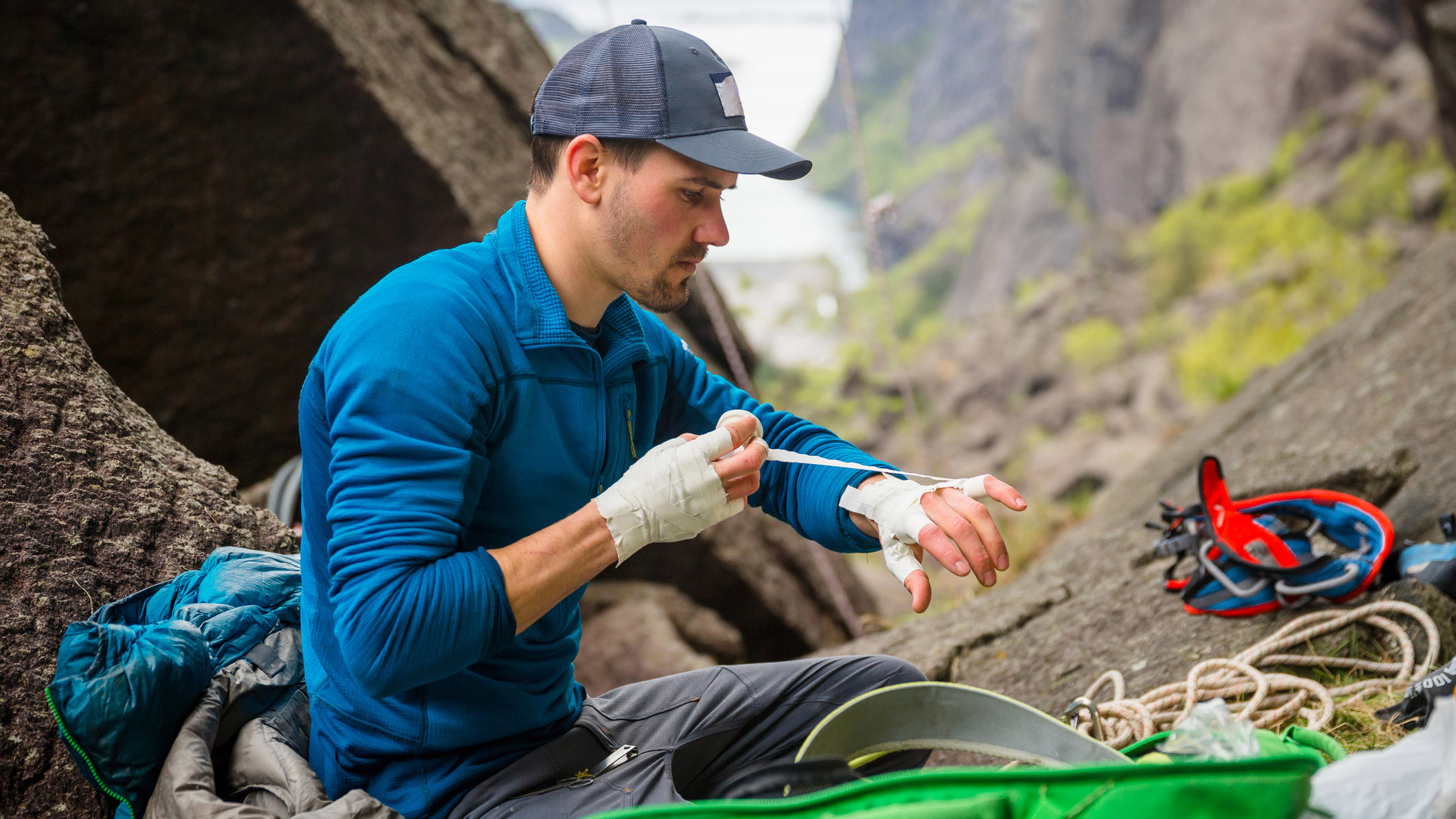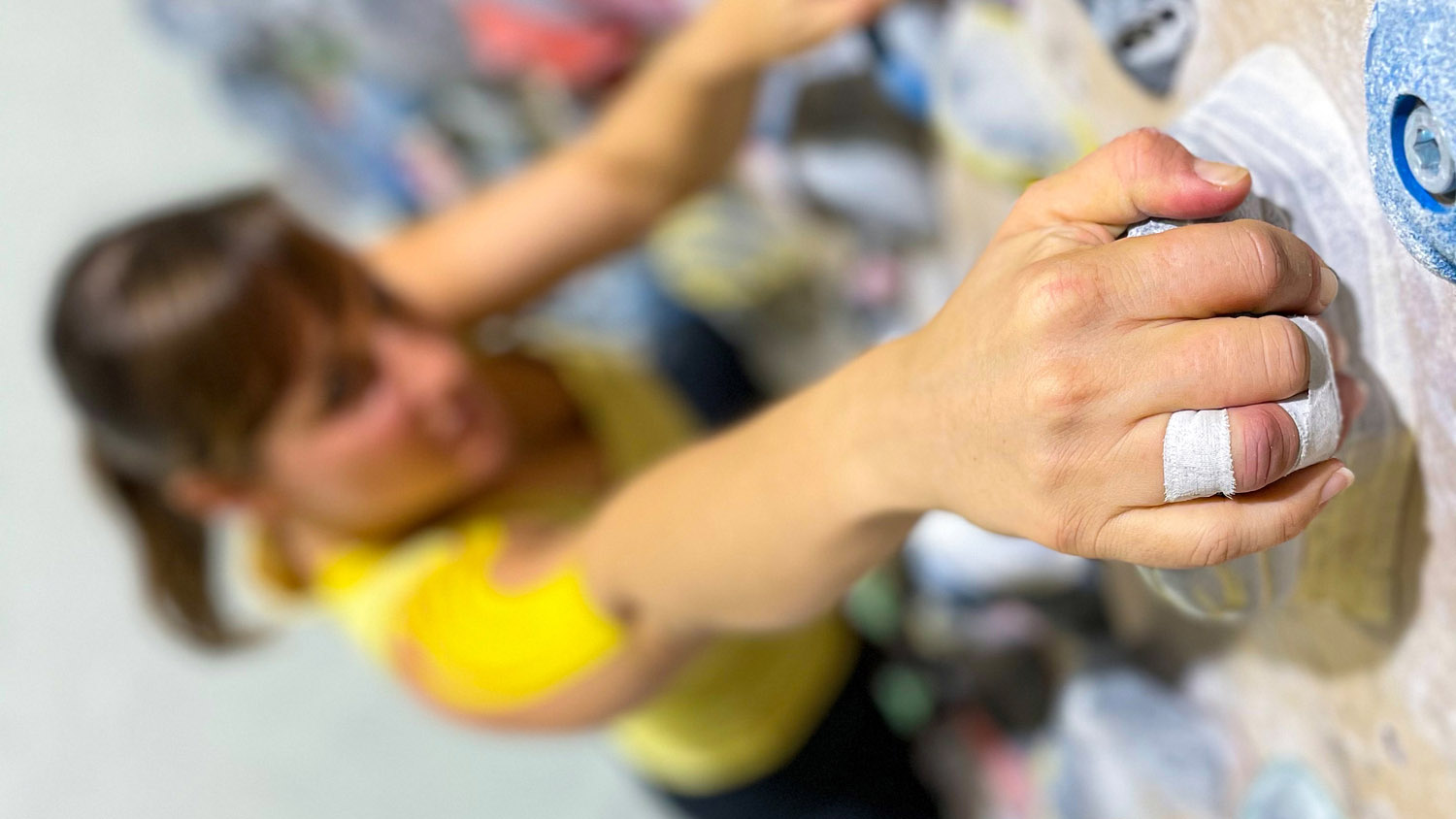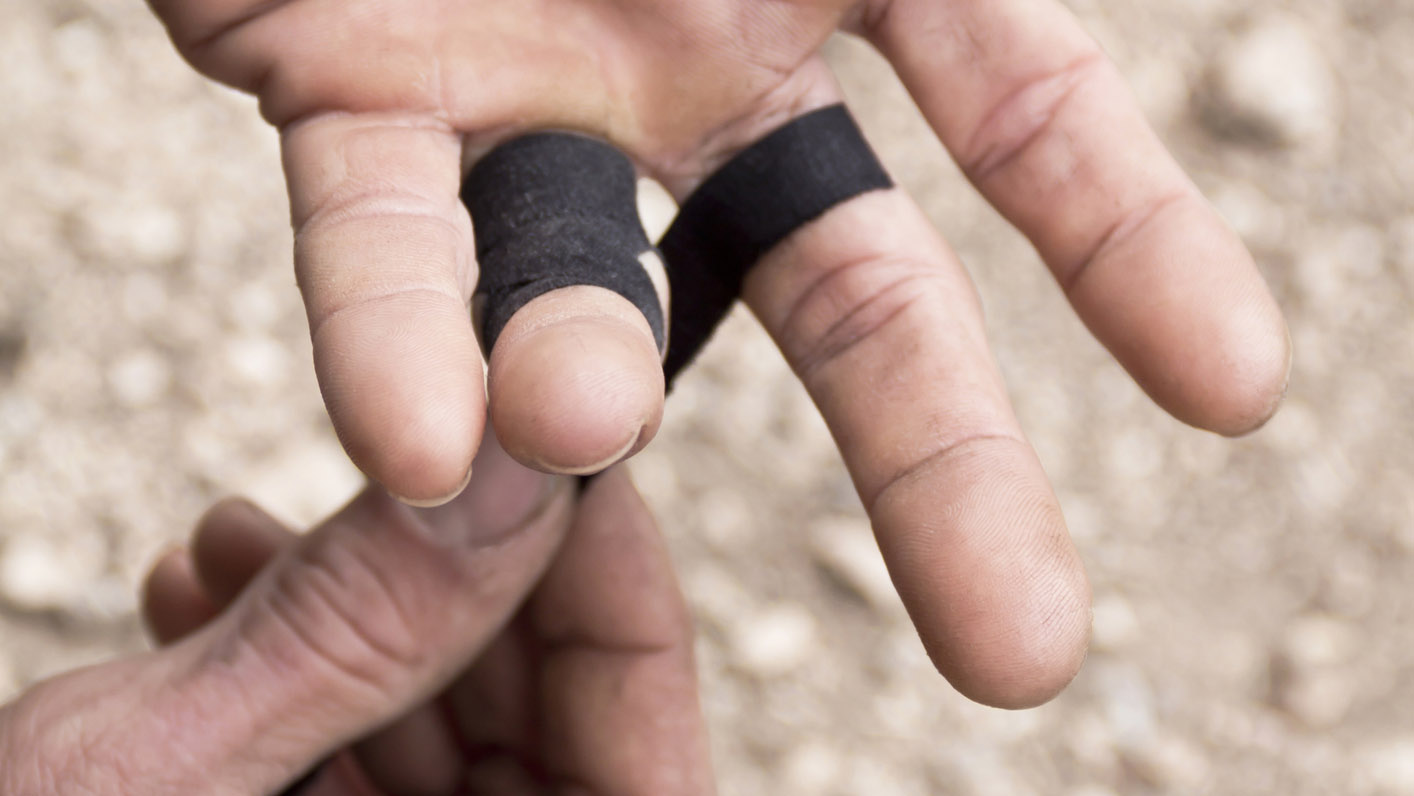What is climbing tape used for? We unwrap the applications of humble climbing tape
What is climbing tape used for, what are its advantages and disadvantages and what characteristics should you be looking for in the ideal tape?

What is climbing tape used for? On a simple level, it boils down to skin protection and supposed structural support for your fingers, though research is inconclusive on the latter. All climbers face a compromise between the need to work their fingers hard when on the wall and the need to protect them for future climbs and climbing tape forms a part of this.
If you climb regularly, the chances are you’ve had your fair share of finger injuries, whether its tears in your skin, flappers or injuries to the many bones, muscles and tendons found in your grippy little digits. After a few hours of climbing, your fingers will have taken a fair beating. The skin will be raw and worn down, which makes it more likely to tear. While this kind of injury is nothing too serious, it can take a few days to heal and will likely diminish your climbing enjoyment on subsequent sessions. A layer or two of climbing tape provides skin protection and makes this less likely to occur.

If the claims that climbing tape offers structural support are to be believed, consider the benefits of climbing tape for your digits in the same way that trekkers consider the protection given to their ankles by the best hiking boots. Between the tiny tendons in your fingers are pulleys that keep your tendons in place while taking on much of the load. These pulleys, particularly the A2 pully, are susceptible to injury when put under repeated strain, strain which can be alleviated, if perhaps only slightly, with climbing tape.
However, there are plenty of reasons why not wearing climbing tape is preferable. Just in the same way that advocates of the best hiking shoes claim that their ankles will be stronger over time than those who always protect theirs with boots, many climbers argue that the more they expose their fingers to the rigors and textures of the rock, the more their skin will toughen and the more their fingers will adapt and strengthen.
What is climbing tape used for? The advantages
Where skin protection is concerned, the advantage of climbing tape is obvious. It should stop the vast majority of little nicks and tears your fingers might suffer during a hard climb. These kinds of minor injuries are more common in outdoor settings but tape is commonly used at climbing gyms too. However, if you’re on a long expedition and you’re taking on a rocky scramble without your best hiking gloves, tape might be a good idea. It’s compact, light and slips into your pack with no trouble. It can even be used for makeshift kit repairs until a more permanent fix can be sought.

Climbing tape can be used not only as a prevention measure but also as a makeshift barrier between an injury and the wall. If you develop tears, splits or flappers – a rock climbing term for when an area of skin comes loose on your finger – you can tape them down to avoid further agitation against the rock, thus decreasing the sensitivity of the affected area.
When fist or hand jamming in a crack, you can use tape to protect your hand from suffering too much. To do this, a climber wraps the tape around their hand like a glove, shielding the skin that will come into contact with the rock. Of course, the downside of this is that the tape won’t give you as much friction.
Advnture Newsletter
All the latest inspiration, tips and guides to help you plan your next Advnture!
What is climbing tape used for? The disadvantages
An obvious downside of climbing tape is that it does not provide anywhere near as much friction as your skin, meaning it doesn’t grip holds as well. When you add sweat into the equation, it will become even less reliable when it comes to gripping rock.

In the case of taping down a flapper, while decreased sensitivity to the injured area might be beneficial in terms of pain management, it’s detrimental in terms of the precise feedback a climber gets from their sense of touch, thus making the climbing more difficult.
As mentioned previously, using climbing tape limits your fingers’ ability to naturally adapt to the rigors of rock climbing. Many would argue a better approach is to properly consider how to train for climbing so that you build finger toughness and strength up slowly. If a climbing session ends with your fingers in shreds, it means you need to take the grade down a peg or two.
What is climbing tape used for? What to look out for to get the perfect tape

Climbing tape is different to standard athletic tape, so make sure you look for a specific climbing tape brand. The tape shouldn’t stretch and should be extremely adhesive, unlike athletic tape which has a significant amount of stretch in it. Different climbers swear by different makes, so try a few and choose the one that suits you best.
Alex is a freelance adventure writer and mountain leader with an insatiable passion for the mountains. A Cumbrian born and bred, his native English Lake District has a special place in his heart, though he is at least equally happy in North Wales, the Scottish Highlands or the European Alps. Through his hiking, mountaineering, climbing and trail running adventures, Alex aims to inspire others to get outdoors. He's the former President of the London Mountaineering Club, is training to become a winter mountain leader, looking to finally finish bagging all the Wainwright fells of the Lake District and is always keen to head to the 4,000-meter peaks of the Alps. www.alexfoxfield.com

